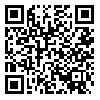دوره 10، شماره 1 - ( 12-1400 )
جلد 10 شماره 1 صفحات 16-11 |
برگشت به فهرست نسخه ها
Download citation:
BibTeX | RIS | EndNote | Medlars | ProCite | Reference Manager | RefWorks
Send citation to:



BibTeX | RIS | EndNote | Medlars | ProCite | Reference Manager | RefWorks
Send citation to:
Zarghani H, Naghizade A, Gholami F. Measurement of background gamma radiation in surgical and other wards of teaching hospitals affiliated to birjand university of medical sciences, birjand, iran. J Surg Trauma 2022; 10 (1) :11-16
URL: http://jsurgery.bums.ac.ir/article-1-278-fa.html
URL: http://jsurgery.bums.ac.ir/article-1-278-fa.html
Measurement of background gamma radiation in surgical and other wards of teaching hospitals affiliated to birjand university of medical sciences, birjand, iran. نشریه جراحی و تروما 1400; 10 (1) :16-11
چکیده: (1055 مشاهده)
- Introduction: Measurement of background gamma radiation in the human living environment, including hospitals, can provide useful information for epidemiological studies and authority bodies to consider appropriate strategies to reduce the exposure of these resources. Therefore, this study aimed to evaluate the background gamma radiation in surgical and other hospital wards, as well as indoors and outdoors of Valiasr, Razi, and Imam Reza hospitals in Birjand, Iran.
- Methods: Measurement of background gamma was performed according to the protocols of the International Commission on Radiation Protection by X5CPLUS survey meter. This study was conducted in Valiasr, Razi, and Imam Reza hospitals, South Khorasan province, Birjand, Iran, using a Geiger- Müller dosimeter in nano Sieverts per hour (nSv/h). Measurements were taken in the general sections and five stations outside the buildings (18 stations in total), and at each station, for half an hour and every minute, the readings were recorded at a distance of one meter from the ground. The average readings as dose background gamma were reported at the measured stations.
- Results: In the present study, among three evaluated hospitals, the maximum values in Razi, Imam Reza, and Valiasr hospitals were related to the urology department (62.04±13), orthopedic unit (94.66±20), and ENT department (60.7±19), respectively. On the other hand, the maximum outdoor dose values in Razi, Valiasr, and Imam Reza hospitals were in the southwest (62.5±12), southeast (57.9±13), and northwest (57±14), respectively. Furthermore, the minimum observed background radiation values in Valiasr, Razi, and Imam Reza hospitals were related to the emergency department (47.3±17), neurology department (51.86±17), and southwest point (53.9±19), respectively.
- Conclusion: The results of this study show that none of the hospital units nor outdoors in these hospitals can be introduced as a point where the amount of background radiation has an important concern.
نوع مطالعه: پژوهشي |
موضوع مقاله:
عمومى
دریافت: 1400/3/9 | پذیرش: 1400/11/11 | انتشار الکترونیک پیش از انتشار نهایی: 1400/11/15 | انتشار: 1400/12/10 | انتشار الکترونیک: 1400/12/10
دریافت: 1400/3/9 | پذیرش: 1400/11/11 | انتشار الکترونیک پیش از انتشار نهایی: 1400/11/15 | انتشار: 1400/12/10 | انتشار الکترونیک: 1400/12/10
| بازنشر اطلاعات | |
 |
این مقاله تحت شرایط Creative Commons Attribution-NonCommercial 4.0 International License قابل بازنشر است. |




